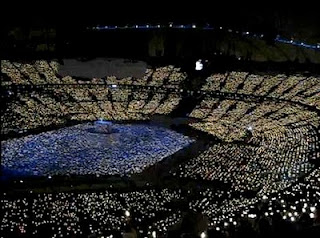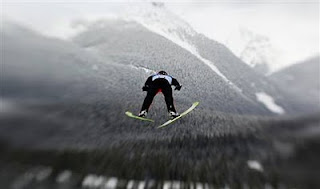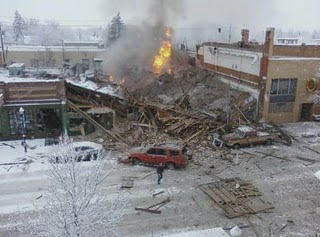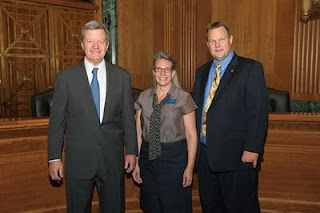 My new year starts with continued work on water: water records updates for the Montana Water Court, planning the Greater Gallatin Watershed Council annual meeting (January 21), continued work on the legislative Water Policy Interim Committee (which meets this month in Helena), and info-gathering on a controlled groundwater area in Bozeman: the Bozeman Solvent Site, polluted with tetrachloroethene (PCE) by a dry cleaner 20 years ago.
My new year starts with continued work on water: water records updates for the Montana Water Court, planning the Greater Gallatin Watershed Council annual meeting (January 21), continued work on the legislative Water Policy Interim Committee (which meets this month in Helena), and info-gathering on a controlled groundwater area in Bozeman: the Bozeman Solvent Site, polluted with tetrachloroethene (PCE) by a dry cleaner 20 years ago.
Before Christmas, I attended a presentation by the Department of Environmental Quality about the Bozeman Solvent Site. The DEQ will begin an indoor air investigation in January for homes in the plume, closest to the site of the pollution, to determine if PCE vapor has infiltrated homes and affects people’s health.
The Bozeman Solvent Site is located north of West Main Street and east of North 19th Avenue and extends north of the East Gallatin River. It includes the shopping center (now the Hastings/CVS stores). Soil and groundwater at the site have been contaminated by PCE and PCE has been detected in indoor air at the shopping center.

By way of history, a dry cleaner in the Buttrey Shopping Center in central Bozeman released PCE, a solvent and degreaser, into the city sewer line and into a septic field in the 1980s. The toxin contaminated the soil and groundwater, and the plume of contamination now extends 2 1/2 to 3 miles, to the north of the East Gallatin River. In 1990, an assessment was done to determine if the site could be declared a Superfund site; in 1994, it was declared one. Since 1998, the plume and surrounding area has been a controlled groundwater area (CGA), with restrictions on use of groundwater: no drinking wells, and all previous well-users must be connected to the municipal water supply. The sewer line and septic tank were removed, but not before the contamination spread. Contaminated soil and water are still on-site, and the plume grows.
Tetrachloroethene (PCE) is a carcinogen. Long-term exposure can cause leukemia and cancer of the skin, colon, lung, larynx, bladder, and urogenital tract. Long-term exposure may also damage the central nervous system, liver, and kidneys; can cause respiratory failure, memory loss, confusion, and dry and cracked skin. Short-term exposure to high levels of perchloroethylene can cause buildup of fluid in the lungs, eye and respiratory irritation, severe shortness of breath, sweating, nausea, vomiting, headache, dizziness, sleepiness, confusion, difficulty speaking and walking, and lightheadedness. (From the National Library of Medicine, http://toxtown.nlm.nih.gov/text_version/chemicals.php?id=22)
PCE can break down in an anaerobic environment, but groundwater and homes with indoor air are aerobic environments. PCE sinks in water because of its poor water solubility and its high density. Thus, it may accumulate in and be carried by groundwater and surface water. PCE is classed as very hazardous to water. It is toxic to aquatic organisms and decomposes slowly to form trichloroacetic acid and hydrochloric acid.
PCE can degrade when its chlorine atoms are lost; from four chlorine atoms to three, it becomes trichloroethene (TCE); from three to two chlorine atoms, dichloroethene (DCE). Most unfortunately, degradation will not occur in the Solvent Site situation because the environment is not anaerobic. Our PCE stays PCE and volatizes to vapor.
 PCE volatizes from liquid to a vapor form, and indoor air vapor collects from contaminated soil and groundwater. The depth to groundwater is shallow in the area, 5-25 feet, which contributes to the problem; it keeps moving the contaminant, and keeps it too close to the surface.
PCE volatizes from liquid to a vapor form, and indoor air vapor collects from contaminated soil and groundwater. The depth to groundwater is shallow in the area, 5-25 feet, which contributes to the problem; it keeps moving the contaminant, and keeps it too close to the surface.
Major human exposure is from inhalation of contaminated urban air, especially near point sources such as dry cleaners, drinking contaminated water from contaminated aquifers and drinking water distributed in pipelines with vinyl liners, and inhalation of contaminated indoor air in metal degreasing and dry cleaning industries.

PCE tests in our north central neighborhood yielded shocking results. Soil vapor probes 9-12 feet below the surface and above groundwater showed staggering numbers. The EPA standard for levels of PCE acceptable for human health exposure are 4.1 micrograms per cubic meter. Montana DEQ determined that a level ten times higher, 41 mg/m3, would be acceptable. But the tests showed levels as high as 1700 mg/m3. One of the DEQ staff said that they thought the lab equipment had malfunctioned when they first saw that number. But no, it really is that high. An “acceptable” limit of 4.1, and a test result of 1700.
Municipal water is now provided to the homes in the neighborhood, the sewer line and septic tank have been removed, but the site is still contaminated, and there are restrictions on any groundwater use. Now the focus is concentrations of PCE in indoor air.
I asked about continued contamination removal. Soil removal, which is unmanageable just for the scale of such a project, is not an option because the PCE, which sinks lower than the groundwater table, would still be in place and would still migrate up, through new, clean soil.
I asked if anything neutralizes PCE. Is it possible to inject compounds into the contaminated soil and water and counter the PCE? No.
I asked how much material remains on the original site. Can we remove the soil from the septic site, if that would help to relieve the amount of PCE that will contaminate the plume for years to come? How large will the plume become? What are the concentrations down-grade?
The mitigation for vapor intrusion is venting the vapors out. That means pressurizing a home or business so that PCE vapors don’t come in, or if the PCE is detected inside, continuously blowing the indoor air out.
I asked about the effects of PCE on human health and that aspect of the indoor air testing. The response from DEQ: “That’s not within DEQ’s scope to do.” I was referred to the Department of Public Health and Human Services, to ask if they could provide some help for the human health effects. Hmmph.

Since the meeting, I’ve been in contact with DEQ staff about establishing a dry cleaner clean-up mitigation fund, much like state’s Petroleum Storage Tank Cleanup Fund.
If I’m re-elected, I’ll pursue a solution to PCE contamination. There’s a site in Livingston, too, with PCE vapor intrusion, and my DEQ contact says that there are many, many potential sites in the state rife for PCE contamination.
Know that I’ll keep on this issue for the health of my friends and neighbors, wherever they are in the state, and for health of our water.

On a separate note, here’s a hawk on my porch fence this morning, scoping the backyard for tasty songbirds and squirrels, both abundant here.
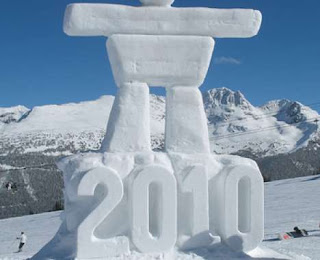

 I’ve just finished watching the Opening Ceremonies of the 2010 Winter Olympics in Vancouver, and it was simply spectacular. I loved the visuals, the welcome by the First Nations, the Parade of Nations, the music (especially k.d.lang singing Leonard Cohen’s Hallelujah–incredible), the poetry slam, the fiddles and tap dancing and tartans of the NE part of Canada, the imagery of the mountains, plains, oceans and ice, and the city of Vancouver. I love a city.
I’ve just finished watching the Opening Ceremonies of the 2010 Winter Olympics in Vancouver, and it was simply spectacular. I loved the visuals, the welcome by the First Nations, the Parade of Nations, the music (especially k.d.lang singing Leonard Cohen’s Hallelujah–incredible), the poetry slam, the fiddles and tap dancing and tartans of the NE part of Canada, the imagery of the mountains, plains, oceans and ice, and the city of Vancouver. I love a city.